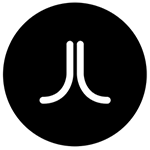The Benefits of Web3 and The Merging Physical and Digital Products
NFTs (non-fungible tokens) can act as digital representations of physical products such as oil paintings, apparel, jewellery or anything else relevant to your creative business. NFTs allow artists to create digital representations of their physical products that can be sold and traded on the blockchain. This allows the artist to monetise their work in a new way and to reach new audiences in many new and interesting ways such as through the Metaverse.

The Metaverse
The great thing about NFTs is how they can be displayed in the Metaverse, which is a virtual world that exists in the digital space. There are many Metaverse’s being built each offering different utilities to people that purchase an NFT from their projects such as a PFP (profile picture) NFT or virtual land which is offered to projects such as the xSpectar Project. It isn’t a central space and whether that is good or bad is up for debate. Many want the decentralisation aspect but we also want to be connected, yet there is a disconnection when Metaverse’s split into thousands of separate virtual worlds. So it can be important to focus on where you want your artwork to be displayed when looking for potential buyers.
In the Metaverse, NFTs can be featured in virtual galleries and exhibitions, allowing the artwork to be seen by a much wider audience than would be possible in the physical world helping to open up new opportunities.
As an artist, aside from the financial gain from making sales, much more importantly, we want people to view and enjoy our artwork. Artists who submit their artwork to galleries get the ability to share their work with visitors, and while this is fantastic, it is also extremely limiting in its reach, especially if your painting is bought up instantly and then stays forever on a private wall.
Virtual Reality
VR (Virtual Reality) headsets provide viewers with a completely immersive experience that allows them to move around the artwork, get up close to view details, and even interact with the artwork. With virtual reality, viewers can explore the artwork from any angle and move around the environment, creating a more engaging and realistic experience of the art. Similarly, 3D projection and stereoscopic 3D allow viewers to experience the artwork in three dimensions, providing a more lifelike experience than in Web2.
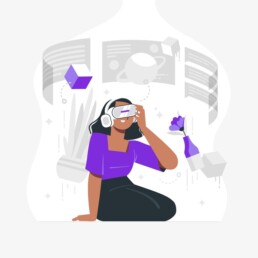
Augmented Reality
AR (Augmented Reality) apps bring art to life by allowing viewers to interact with the artwork in real time. For example, viewers can use an AR app to examine the artwork from different angles, add annotations, or even animate the artwork. AR apps also provide viewers with additional information about the artwork, such as the artist’s biography or the historical context.
Artists can be much more creative but it does mean that they need to put even more work into enticing an audience into viewing their artwork. Something that I’ve done to elevate the viewing experience is by adding animation over the top or re-editing it to go into AR so that buyers of my print can also view the animated version by holding their phones up to the print. Two good AR Apps to make your work more immersive are Artvive and EyeJack.
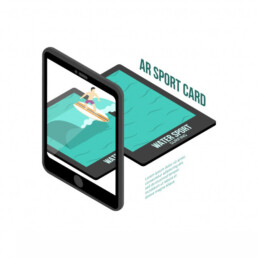
Virtual Showcasing
Web3 has also enabled new opportunities for artists to showcase their work in innovative ways. For example, artists can create virtual exhibitions, allowing them to reach a wider audience and generate more interest in their art. Additionally, artists can use Web3 to create interactive art installations that allow viewers to interact with the artwork in real-time.
If you are selling apparel you may be able to scan your items by taking multiple angles of the item and importing them into software, where you can create an exact 3D model replica. Achievable now on mobile, you can use an App called Polycam. To really benefit from this app there is a cost per year to render and use their cloud service but if you intend to use it often to create digital versions of your physical goods it might be an option to consider.
This digital replica can then be put into a Metaverse, so people wearing VR can see the item to scale and walk around it, maybe even pick it up. Then if they like it, they could pay for it within the virtual space and send you payment, settling almost instantly. You as an apparel business owner could then send that item to the buyer immediately as you know that their payment won’t bounce or get rejected and no middleman needed to come in between like Paypal taking fees. The only fee may be the gas fee of the transaction.
If you mint your NFTs on the Ethereum Blockchain, there are plenty of devs who have created well-designed galleries such as OnCyber using the latest Unreal Engine to fully connect and display your NFTs in hyperrealistic galleries. Unfortunately for other lesser-known or newer blockchains, these capabilities remain to be seen.
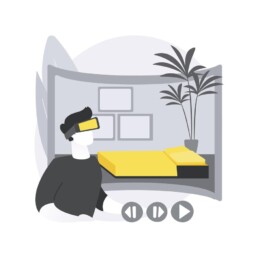
Physical Redemption
A Defi company such as FLR Finance, are looking to implement physical redemption of NFTs using their Ermis Protocol. It allows you to redeem and share your information, where the physical item will be distributed on-chain, remaining completely private between both the buyer and seller.
Physical Backed Tokens
There is also the PBT, short for Physical Backed Token, which is a brand new way of connecting an NFT with physical items, thanks to the Azuki project. Aside from the Web3 experience, it also allows your customers to have proof of authenticity verifiable via the blockchain, with full tracking of ownership history. The only issue currently, is that this technology is so new that it is only available on particular blockchains and not easily accessible.
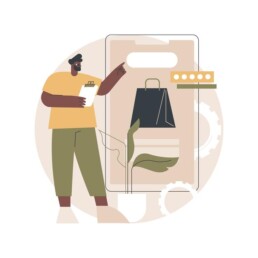
Envisioning the Future
Imagine you had a chair, and that chair had a built-in chip. And with that chip, you can scan it on your phone and see its full history of transactions and traded prices. And you put the digital version of that chair into the metaverse and had it for sale. You now have a piece of furniture that the world can view and possibly buy if an offer was made. And this can in theory be applied to almost anything, including your drawings, sculptures and paintings.
I am confident in saying that this is where our world is headed and people will favour items that can be authenticated in this way over items that can’t. I envision almost all of our personal belongings to be connected in this way, essentially converting illiquid assets into liquid assets.
Perhaps one day soon we will all be able to upload our physical goods and upload them into the metaverse, into our virtual shops, removing the distance barrier while letting people shop in a natural way as we all do in our nearby high street. We may also go full circle and end up working with reputable galleries in the Metaverse where yet again they take a large cut of the sales. Only this time, instead of it being sold to a local buyer, it is sold to a buyer on the other side of the world.

Navigating and Starting an Art Business in Web3
A Brief Introduction
The rise of Web3 and Non-Fungible Tokens (NFTs) presents a unique set of difficulties for artists looking to move their careers into this space. Despite the many benefits that come with creating and selling NFTs, such as increased exposure and the ability to sell unique, one-of-a-kind digital assets, there are several challenges that artists must contend with.
Today I just wanted to share with you some of my thoughts on the challenges I have faced when trying to start an art business using Cryptocurrencies and NFTs.
I went full-time into creating my artwork and selling them with NFTs, with the intention of letting owners get physical prints since November 2020 but had prepared for it since the beginning of 2020 building out my website, business plan and producing artwork while I was still working full-time for an animation company.

Receiving and Transferring Payment
Another challenge is being at the mercy of exchanges when it comes to off-ramping earnings into fiat currency and into a bank. Exchanges are the gatekeepers of cryptocurrencies, and artists must rely on them to convert their earnings into fiat currency. However, exchanges often have high fees and can freeze accounts, making it difficult for artists to access their earnings. But an artist must pay the amount of tax owed, so the longer the earnings are not put into the bank, the longer the risk exposure becomes.
I can’t emphasise enough the need for payment in a Stablecoin. In a perfect scenario, a customer can purchase the artwork in whatever crypto asset of their choosing, and the artist receives the currency of their choosing, with the marketplace handling the exchange of assets.
Receiving payment in a Stablecoin, which is pegged to a country’s currency, offers several benefits compared to receiving payment in a cryptocurrency that may be illiquid.
My advice would be to convert into fiat or a Stablecoin as soon as you can, and put the tax % and VAT you owe straight into your bank for your mental health and financial security.
- Stable Value: Stablecoins offer stable value compared to other cryptocurrencies which may have high price volatility. This stability is important for artists who need to have a predictable and consistent revenue stream.
- Liquidity: A Stablecoin that is pegged to a country's currency is more liquid, meaning it can be easily converted to cash or other cryptocurrencies, which is not always possible with an illiquid cryptocurrency.
- Wider Acceptance: Stablecoins are widely accepted as a means of payment, allowing artists to easily receive payment and use it to pay their bills and expenses.
- Ease of Use: Stablecoins can be easily used by anyone with a smartphone and a wallet, making them accessible to a wider range of artists and art buyers, even those without a background in finance.
Receiving payment in a Stablecoin based on their country’s currency can greatly improve the adoption of crypto for artists by providing a secure, stable and easily accessible means of payment.
I held a crypto asset that used a form of passive earning through weekly rewards. Once the value of the cryptocurrencies crashed I lost A LOT of money. However I still was required to pay for the tax of the NFT sales and be put into the highest tax bracket regardless of this massive financial impact.
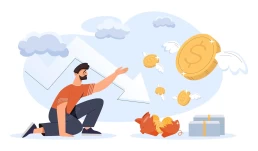
Invoices
Another huge problem is the lack of automated invoices when an NFT purchase is made also presents a challenge for artists. This means that artists must manually keep track of sales and create invoices themselves, which can be time-consuming and prone to error. If we are to utilise NFTs and crypto for their benefit of fast settlement time, then we need smart contracts that have a built-in function whereby an invoice can be automatically generated and sent to the artist.
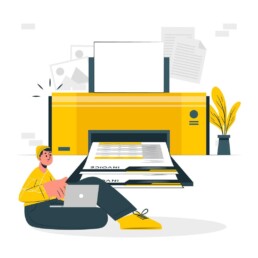
Gas Fees
Gas fees for creating or selling NFTs can also be expensive, which can eat into an artist’s profits. Additionally, there is a risk of losing assets by typing in the wrong cryptocurrency address, which can result in a permanent loss of funds.
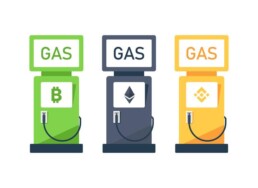
VAT & Taxation
Another huge problem is the lack of automated invoices when an NFT purchase is made also presents a challenge for artists. This means that artists must manually keep track of sales and create invoices themselves, which can be time-consuming and prone to error. If we are to utilise NFTs and crypto for their benefit of fast settlement time, then we need smart contracts that have a built-in function whereby an invoice can be automatically generated and sent to the artist.
Koinly is a useful website for sorting out the tax owed, but it doesn’t help when you need to connect a specific NFT sale to an invoice if you attach physical items with the sale. You will still need to find the specific sale attributed to the buyer and manually apply it and convert it to the fiat equivalent at the time of sale. I realise that crypto laws vary widely per country so be sure to know what laws apply to your business.
You should also never assume that because it is crypto that you can evade taxes. Everything is recorded on the blockchain, so your entire tax history can be traced.
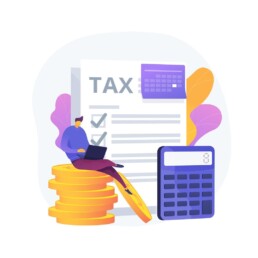
Lack of Regulatory Clarity
Turns out that it’s very expensive to innovate in this space.
The lack of regulatory clarity surrounding NFTs means that artists may need to pay a tax specialist or lawyer to navigate the complex tax laws to ensure they are in compliance with the laws. This can add an additional cost to the process and further slow down the process of creating and selling NFTs.
Despite the many benefits of NFTs, artists must contend with a number of difficulties when moving their careers into the Web3 and NFT space. From tax implications to exchange fees and the lack of regulatory clarity, these challenges can make the process of creating and selling NFTs more complex and time-consuming than traditional systems. It is important for an artist to carefully weigh the potential benefits and challenges before making the transition to selling artwork in the NFT space.
I have lost many thousands to tax lawyers who have used my earnings to fund their time to learn how to navigate the law and charging me for the tax advice as there is no where to go.
NFT Marketplaces
In addition, one of the main challenges faced by independent artists is the complexity of NFT marketplaces. With a plethora of platforms and a wide range of token standards, it can be difficult for independent artists to navigate and understand the NFT space. This can lead to confusion and uncertainty, making it difficult for independent artists to effectively showcase and sell their work.
My artwork is distributed amongst different blockchains, some have had NFT mints that I have burned but it still appears inside the marketplaces. Overall it just seems incredibly messy and difficult for an art collector to find your entire body of work if you have moved blockchain. I use my website as the central hub where all my NFTs can be discovered but not every artist has a website and it can be costly and requires constant maintenance.
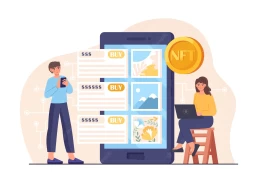
Displaying Work Amongst PFP (profile picture) Projects & Ai Generated Artwork
The dominance of PFP projects and AI-generated artwork has made it difficult for independent artists to compete and be recognised in the NFT market. PFP projects and AI-generated artwork have gained a significant following, attracting large amounts of investment and attention. This dominance also leads to a homogenisation of the NFT market, where similar themes and styles are prevalent, making it even more challenging for independent artists to stand out and showcase their unique perspectives and styles.
To address these challenges, NFT marketplaces need to improve their support for independent artists. This can be achieved by providing educational resources and support to help independent artists navigate the NFT space, creating opportunities for independent artists to showcase their work, and promoting a diverse and inclusive NFT market. Additionally, NFT marketplaces can also promote independent artists by highlighting their work and providing them with greater visibility, making it easier for them to connect with potential buyers and collectors.
This is for me an important one. When we think of crypto, we think of anonymity. So you don’t truly know who is buying your artwork. It is the same problem that exists today in the traditional art markets where galleries act as the middlemen and often is the case where the artist never gets to meet or know their buyer.
Final Thoughts
For me personally, it’s not been easy. While it is nice to explore new technology and enjoy some of the benefits, that does not mean that it comes with some heavy flaws, which will hopefully be ironed out over time.
If we want to see artists prosper on a more long-term basis and not based on the fluctuations of the crypto markets then we need a system that is much more defined, and better structured for business, removing risk and finding better ways to be discovered and connect with buyers.
If you’re an artist that is not too enthusiastic about using new technology or being at the forefront then I am not sure that this is for you – in the short term while there are improvements that need to be made.
Right now for me, it is a love/hate relationship because I love the potential it has but I hate the inefficiencies and risk that it brings. It has sent me on incredible highs from sales and incredible lows from the loss of assets through the volatility and not converting immediately into a fiat or Stablecoin.

Regardless, for me it is a great feeling to be at the front of emerging technologies and interact with them. I believe it’s a great way to keep up to date with society as a whole and help shape the way our future looks by giving feedback to developers who build these new technologically advanced financial ecosystems using the bricks of our personal input.
Feel free to share this post it really helps and might help other artists know some of the hurdles that lie ahead if they’re just dipping their toes into Web3.
I also want to add that I will be reexamining my position on all of this as time goes on and will probably delve deeper into some of these topics in a separate post in more depth, noting also some of the pros of having worked in this space.
